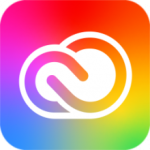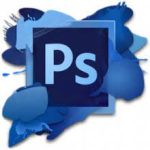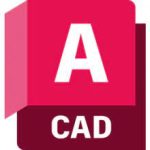Maxon ZBrush
2.57 GBVersion
2024.0Requirements
WIndows 10/11 (64bit)
Description
Maxon ZBrush Overview
ZBrush is a 3D modeling program created by Pixologic. A distinctive feature of this software is the simulation of the process of “sculpting” a three-dimensional sculpture, enhanced by a real-time three-dimensional rendering engine, which significantly simplifies the procedure for creating the required three-dimensional object. Each point (called a pixel) contains information not only about its XY coordinates and color values, but also its Z depth, orientation, and material. This means that you can not only “sculpt” a three-dimensional object, but also “color” it by drawing strokes with depth. But you don’t have to paint shadows and highlights to make them look natural—ZBrush will do it automatically.
Maxon ZBrush Features
- Dynamesh and ZRemesher: ZBrush’s Dynamesh feature enables artists to dynamically adjust the resolution of their models, facilitating seamless sculpting without worrying about polygon limitations. ZRemesher, on the other hand, automates the process of creating clean and optimized topology, saving time and effort.
- Sculpting Brushes: ZBrush boasts a vast array of sculpting brushes that mimic traditional sculpting tools. Whether you’re shaping characters, creatures, or environments, ZBrush’s diverse set of brushes empowers artists to achieve intricate details with ease.
- Subtools and Layers: ZBrush’s support for subtools and layers allows artists to manage complex projects with multiple elements. This feature promotes organization and enhances workflow efficiency, making it a preferred choice for professionals in the industry.
- Conceptualization: ZBrush serves as an ideal platform for artists during the conceptualization phase. With its dynamic sculpting capabilities, artists can quickly sketch and refine their ideas in a 3D space.
- Detailing and Texturing: ZBrush excels in detailing, allowing artists to add intricate textures and fine details to their models. Its painting and texturing tools enable the creation of lifelike surfaces, enhancing the overall realism of the final output.
- Exporting and Integration: ZBrush seamlessly integrates with other 3D software and pipelines. Artists can export their creations to popular platforms like Maya or Blender for further refinement, animation, and rendering.
System requirements:
OS: 64-bit editions of Windows 10 or 11. (32-bit operating systems are no longer supported.)
CPU: Intel i7/i9 technology and newer or AMD Ryzen and newer.
RAM: 4 GB (6+ GB strongly recommended)
HDD: 20 GB of free hard drive space for ZBrush and its scratch disk.
Pen Tablet: Mouse or compatible pressure sensitive tablet. (Must support WinTab API.)
Monitor: 1280×1024 monitor resolution with 32-bit color.
Video card: Must support OpenGL 3.3 or higher and Vulkan 1.1 or higher.
Redshift: Redshift (including Redshift in ZBrush) has its own system requirements.
How to install?
Copy ZBrush.exe with replacement to the root folder of the program. Default: “C:Program FilesMaxon ZBrush 2024”
What's new
Fixed:
- Fixed crash when using the Subtool Pop-up.
- Brushes using Move Topological would deform the mesh at the point of contact.
- The first instance of an IMM mesh would be unexpectedly tiny when drawn with certain stroke types.
- Fixed an issue with the accuracy of ZModeler Alt-selection painting.
- “Apply Last Action to All Subtools” caused a crash when used with certain Deformation actions.
- Redshift material preview was darkening when adjusting materials.
- Movie export would fail with certain settings when above a certain document size. This has been corrected for Windows but still under investigation on macOS.
- Crash when scrubbing with the Timeline feature when an active Nanomesh has been applied.
- Some IMM Curve brushes were not snapping to the surface of the mesh by default.
- After using a Subtool> Split function a texture could not be immediately applied via the Texture Palette Pop-up menu.
- Issue with the Transpose Classic masking gradient.
- Restored the ability to use an alpha with a rectangular selection marquee.
- If Local Symmetry was active, the Transpose brush would not re-center on an inserted mesh even if Dynamic mode was toggled off. Now if Dynamic mode is disabled this should enable the legacy behavior.
- Fixed BPR crash after using the legacy Best render with the Render > Environment feature.
- Corrected an issue with the color fidelity of .ACO files imported into Paintstop from recent versions of Photoshop.
Modified:
- The previous version of the Anchors Brush has been re-added to the Brush Palette as Anchors Classic.
- When attempting to export a movie that would exceed 4095 pixels in width or height, the movie will be resized to 4095 pixels.
Check here more: Official Site Link





